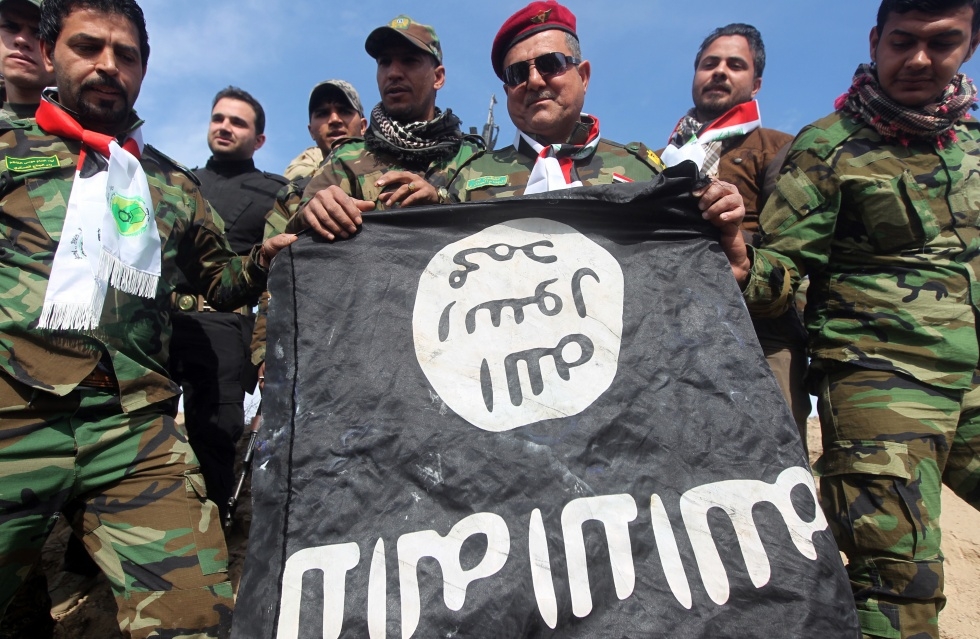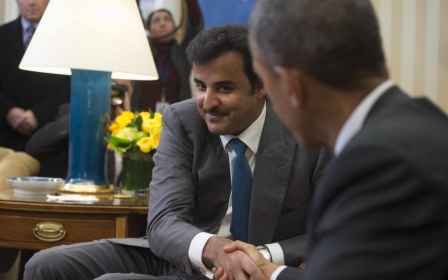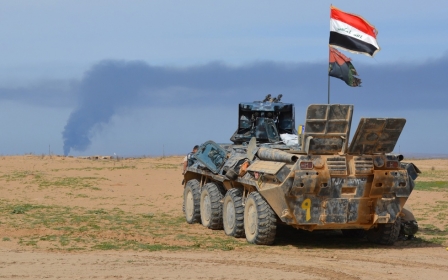Coalition airstrikes against IS clash with reality on the ground

Six months after the United States-led international coalition airstrikes began against the Islamic State, the figures in terms of financial costs, fighters killed, amount of bombs dropped, number of airstrikes launched continue to ratchet up.
Yet the precision of the statistics mask an underlying matter of inconsistencies, uncertainties, and a muddled sense of what has been achieved according to the US government versus the reality on the ground.
The Islamic State, a group that has been denounced by its parent organisation al-Qaeda for being too extreme, declared a caliphate after capturing large swaths of territories across Syria and Iraq at the beginning of summer 2014. Moreover, it is important to note that the main reason for the breakaway was down to ideological differences with al-Qaeda, the killing of other Muslims, and IS’s constant failure to obey orders from headquarters.
A coalition of 60 countries was formed to neutralise the threat of IS - who were pursuing a brutal campaign and had taken over oil fields in order to generate their own revenue.
The coalition’s airstrikes are carried out from Persian Gulf countries, from navy aircraft carriers or out of the allied command centre at the al-Udeid air base in Qatar. Non-US members carry out a small percentage of the attacks and support missions, estimated to be between 15-20 percent.
The first US airstrike on Iraq, near the Kurdish area of Erbil was on 8 August. In the first month alone, 464 fighters belonging to IS were killed, as well as 32 civilians. In addition, 1,700 bombs were dropped on IS targets, and a total of 632 airstrikes were launched.
As of 31 January, the overall cost of the war against IS had reached $US1.3bn, or $US8.3mn a day. Codenamed Operation Inherent Resolve, the campaign against IS has killed thousands of fighters in Syria and Iraq, in what the US State Department sees as part of the general strategy to degrade and defeat the group.
The CIA believes that IS has around 31,000 fighters, most of whom are foreigners. US officials and army generals have maintained that the desired effect of airstrikes has been evident in the destabilising blows they have inflicted upon IS’s training camps, weapons cache, and their inability to expand their territories further.
Stats, targets, and airstrikes
In an interview with al-Arabiya news channel in January, Stuart Jones, the US Ambassador to Iraq, declared that the airstrikes have “taken more than half” of the IS leadership.
“We estimate that the air strikes have now killed more than 6,000 IS fighters in Syria and Iraq,” Jones said.
Jones admitted that the number of those killed is “not so important in themselves” and chose to focus instead on the “degradation of IS”.
“They show IS’s inability to supply forces inside Iraq,” he said, adding that more than a thousand vehicles belonging to IS in Iraq were destroyed by the airstrikes.
This clinical stance regarding the consequences of the airstrikes leads to the assumption that whoever is killed on the ground is assumed to be automatically an IS militant, with the verification of fighters absent from the victims due to a lack of differentiation.
The latest figures of IS fighters killed is 8,500, according to the Central Command chief General Lloyd Austin, who stated that the air strikes were targeting and killing IS fighters.
Hillary Mann Leverett, a former national security director under the Bush administration and lecturer at the Georgetown University’s Centre for Muslim-Christian Understanding, told the Middle East Eye that the US administration itself does not know the exact number of people killed in the strikes because they don’t have a policy for doing so.
“Essentially what it comes down to is that it’s any male between the ages of 15 to 60 who is killed,” she said.
“The reason why numbers are being put out is to try to shape a narrative that the military strategy that they’ve adopted here is doable, and I think that is tied in part to the president’s political agenda to get the congressional authorization for the use of military force.”
Iyad el-Baghdadi, a writer and human rights activist whose book “The Arab Spring Manifesto” is a work in progress, criticised the coalition’s approach to IS.
“You’re not exactly combating terrorism,” he said, “You’re just a terrorism realtor. You’re just moving them from one place to the next.”
“We’re just going by the data that is given to us by these [coalition] governments,” he continued, referring to the numbers of IS fighters supposedly killed. “So we need to take it with a huge pinch of salt. Keep in mind that this vagueness is actually very self-serving for IS as well because they can get to say all the [coalition] is doing is killing civilians, which may or may not be true - we still don’t know.”
More than 2,200 airstrikes carried out by the international coalition have been implemented in Syria and Iraq since the beginning of the campaign, and 5,000 tonnes of bombs were dropped. During the first few months of the campaign, the coalition used an average of five airstrikes in both Syria and Iraq a day. In comparison, the US used 800 strikes per day during the Iraq war in 2003, and 50 strikes a day in the NATO war against Libya in 2011, according to the Centre for Strategic and Budgetary Assessments.
The UK-based Syrian Observatory for Human Rights said in February, 1,600 people have been killed from the airstrikes, including 62 civilians and 73 fighters from the opposition Nusra Front group.
In December, a US army general stated that his forces have not had to investigate reports of civilian casualties from airstrikes.
Lt General James Terry, the commander of the Combined Joint Task Force said that the airstrikes have forced IS on the back pedal, where “they have been halted and attempting to hold what they currently have.”
He also added that, gradually, Iraq’s own military will conduct local counteroffensives against IS on the ground, corroborating the knowledge of how limited the airstrikes are.
General Ray Odierno, the US Army chief of staff, described the airstrikes as “buying us time”.
“It’s going to take people on the ground, ground forces,” he said.
Yet Leverett believes that despite their posturing and declarations of a “generational struggle”, the United States is inconsistent and disordered with how exactly to deal with IS.
“There is a tremendous amount of strategic incoherence here in Washington that the world sees,” Leverett said. “But they continue to pursue this strategy because the politics continue to dominate and the president is unwilling to pursue one that could appear to be weak.”
“There’s not even a pretence [in Washington] that they know what they’re doing,” she continued. “You have military official after official saying that they’ve only just begun to understand ISIS. “The Obama administration needs to have a strategy that gets them out of the door in two years without the world collapsing around them.”
Killing terrorists, or creating more?
Although the airstrikes have dealt a blow to IS’s ability for top-level communications in order to sustain military campaigns and stopped it from expanding its self-described caliphate, there is no indication to suggest that the group is getting weaker.
Affiliates proclaiming their allegiance to IS are now in non-contiguous territories such as the Sinai Peninsula (Waliyat Sinai, formerly known as Ansar Beit al-Maqdis) and in Derna, Libya. Furthermore, the number of IS recruits has not been stemmed, with more people from outside of the region flocking to join the ranks. The typical US military approach to threats that destabilise the status quo and its own interests in that region has not been met with flowers and sweets passed out. Despite heavy experience in matters of military intervention in the region, the US military strategy, in the words of Leverett, only serves to “incentivise and accelerate recruitment”.
“The more the US pursues this assertion built strategy that we’re going to defeat ISIS, all that happens is that ISIS gets stronger and bloodier and more brutal and more anti-American,” she said. “That is transforming what may have been passive low-level sympathy with some of IS’s goals - such as re-establishing the caliphate and resisting western domination - into an increasing number of active supporters … what’s so mindboggling about this is that [the US] has been through this before.”
Baghdadi believes that the United States’ training of Iraqi forces - mostly Shiite - is a recipe for disaster.
“The image of Shia fighters trained by the US marching into Sunni heartland is going to be such a big recruitment opportunity for IS,” he said. “I think so long as you make this sectarian - Sunni forces versus Shia forces - then this is exactly the environment in which IS can thrive. They want a black-and-white world, because now they’re actually praising themselves for their success in polarizing the world.”
Baghdadi points out that the Arab regional powers are merely using the Islamic State as a smokescreen for their own acts of despotism.
“They’re not inconvenienced by IS at all,” he said. “It does not represent an existential threat to them. In fact, it is an incredible opportunity for them because they can do whatever they want.”
Leverett recalled that the same ambiguity surrounded the foreign policies regarding the invasion and occupations of Iraq and Afghanistan during the George W Bush administration.
“I remember being in the same situation in the Bush White House when secretary of defence Donald Rumsfeld himself asked a really simple but profound question: are we killing more terrorists than we are creating? Nobody at that time had the answer, and to this day they still don’t have the answer.”
New MEE newsletter: Jerusalem Dispatch
Sign up to get the latest insights and analysis on Israel-Palestine, alongside Turkey Unpacked and other MEE newsletters
Middle East Eye delivers independent and unrivalled coverage and analysis of the Middle East, North Africa and beyond. To learn more about republishing this content and the associated fees, please fill out this form. More about MEE can be found here.




